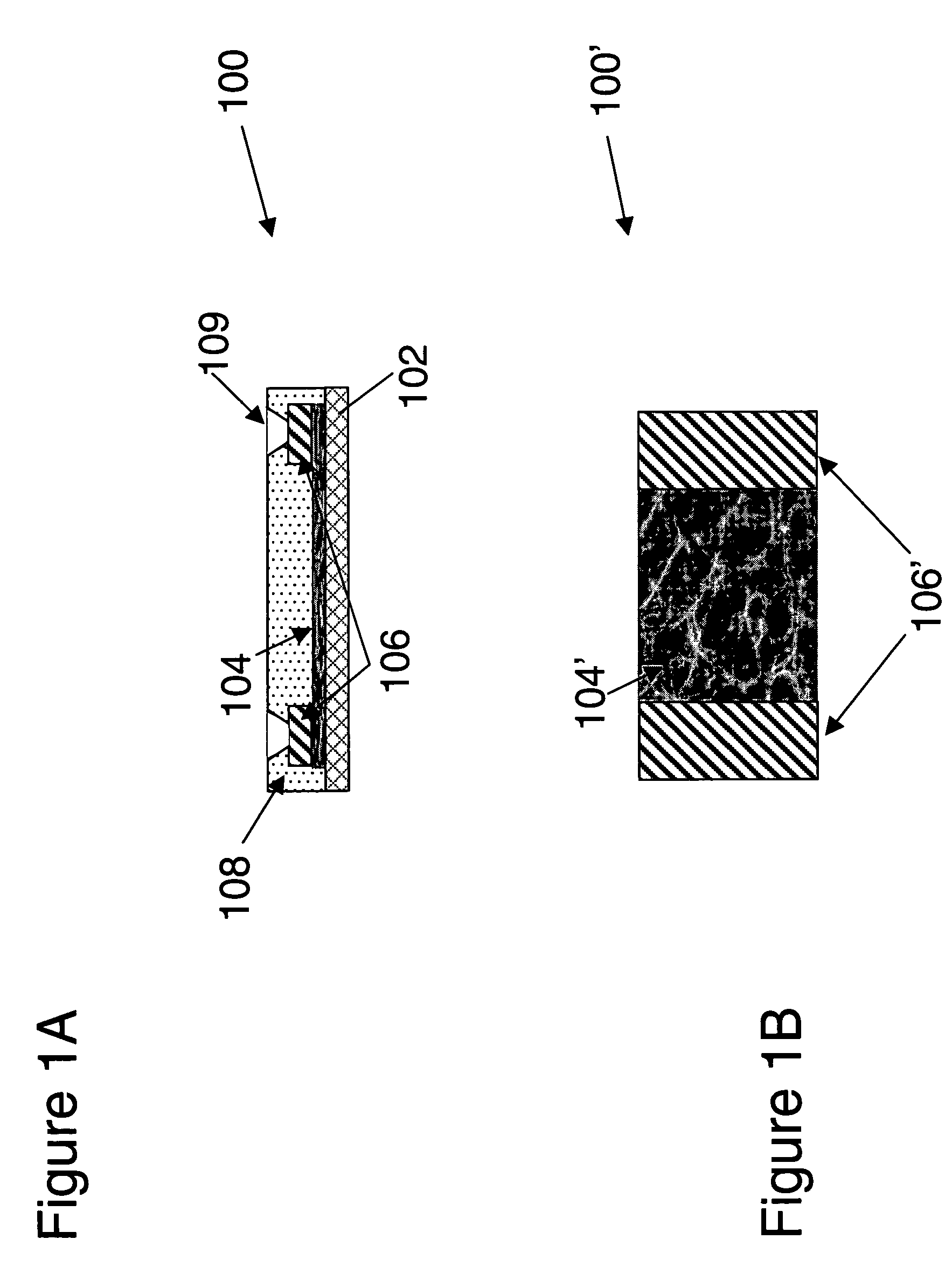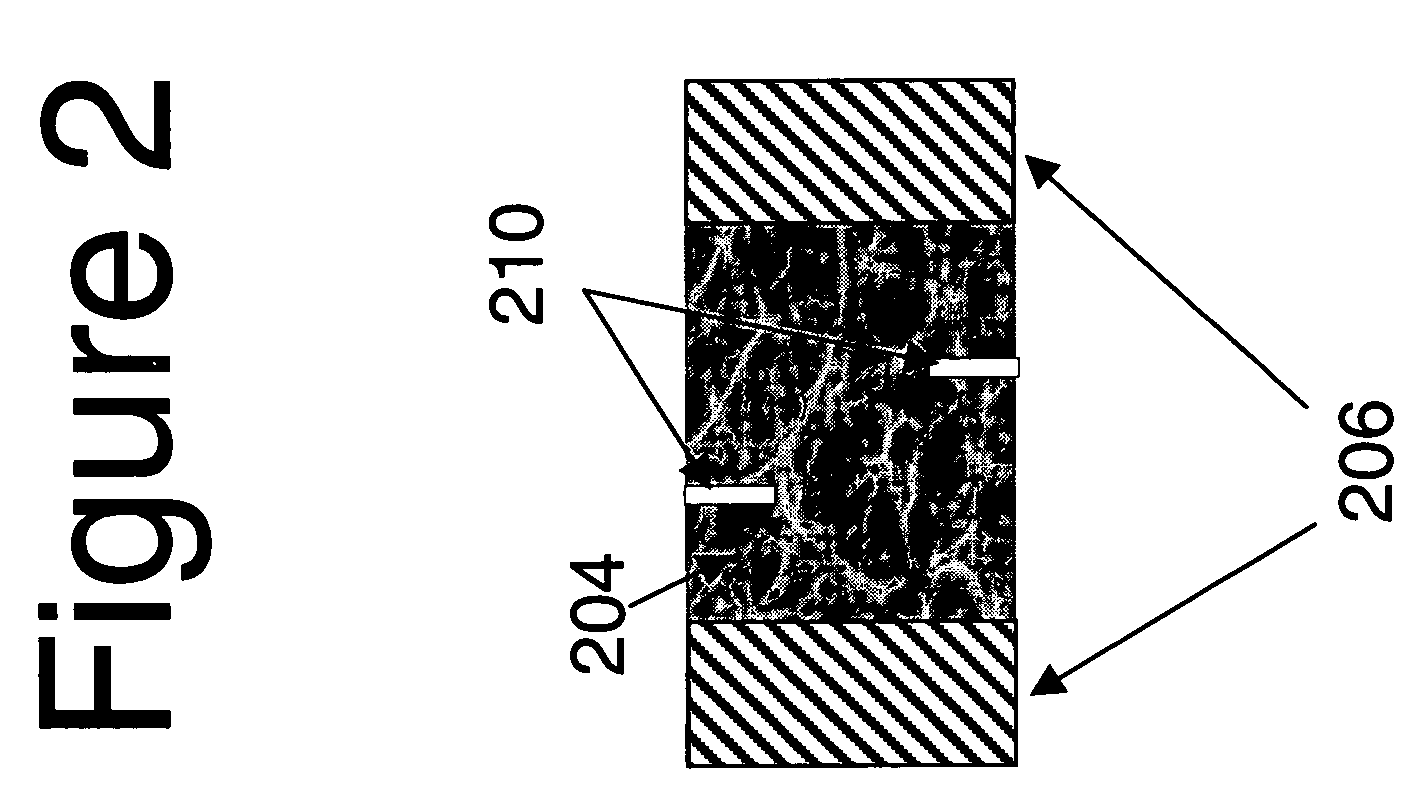Resistive elements using carbon nanotubes
a technology of carbon nanotubes and resistive elements, applied in the field of thin film resistors, can solve the problems of difficult design and fabrication, and large resistance values in excess of 100 k-ohms, and achieve the effects of improving parameter control, increasing the function per device, and prolonging the battery li
- Summary
- Abstract
- Description
- Claims
- Application Information
AI Technical Summary
Benefits of technology
Problems solved by technology
Method used
Image
Examples
example 1
[0041]FIG. 3B illustrates 31 different four-point probe locations 312 on wafer substrate 304 for probing the sheet resistance of nanofabric layer 302 (layer 302 is shown in FIG. 3A) prior to nanotube resistive element patterning. Preferred methods deposit nanofabric layer 302 by spinning an electronic-grade carbon nanotube solution, which includes electronic-grade nanotubes suspended in a coating track-compatible solvent, in a semiconductor fabricator. Thus, nanofabric layer 302 is deposited on a wafer 304 in a semiconductor fabricator using techniques compatible with semiconductor processes (see, e.g., incorporated patent references). Preferred methods include removing the nanotube fabric edge bead. Although patterned nanotube resistive elements are shown as discrete resistors, patterned resistive elements may also be integrated with integrated circuits. Nanofabric layer 302 is a conformal monolayer approximately 1.5 nm thick and may be introduced at any process level after formati...
example 2
[0051]A nanofabric layer (nanofabric) was produced and reliably reproduced having a sheet resistance of 65 K-Ohms-per-square. Resistances were measured at temperatures ranging from −40 degrees C. to 140 degrees C. in air. A four-point probe was used (Os tips, at 0.04 inch spacing, each probe had a 0.01 inch radius, 45 grams of pressure applied and 300 uAmps of current). The investigators calculated a TCR for the film of −22 ppm resistance change per degree, as shown in FIG. 5, which is a graph 500 of ambient temperature vs. Kilo-Ohms resistance in the fabric. This measurement was found to be reliably reproducible, and associated electron transport was hypothesized to be quasiballistic. In the case of the 5 M-Ohm resistor design described in example 1, for a sheet resistance of 60 K-Ohms-per-square, resistive element 100 (as shown in FIG. 1A) requires 77 squares between contacts, corresponding to 154 um of length, and also 2 um of width. As previously described, contact resistances a...
PUM
| Property | Measurement | Unit |
|---|---|---|
| temperatures | aaaaa | aaaaa |
| thickness | aaaaa | aaaaa |
| thickness | aaaaa | aaaaa |
Abstract
Description
Claims
Application Information
 Login to View More
Login to View More - R&D
- Intellectual Property
- Life Sciences
- Materials
- Tech Scout
- Unparalleled Data Quality
- Higher Quality Content
- 60% Fewer Hallucinations
Browse by: Latest US Patents, China's latest patents, Technical Efficacy Thesaurus, Application Domain, Technology Topic, Popular Technical Reports.
© 2025 PatSnap. All rights reserved.Legal|Privacy policy|Modern Slavery Act Transparency Statement|Sitemap|About US| Contact US: help@patsnap.com



